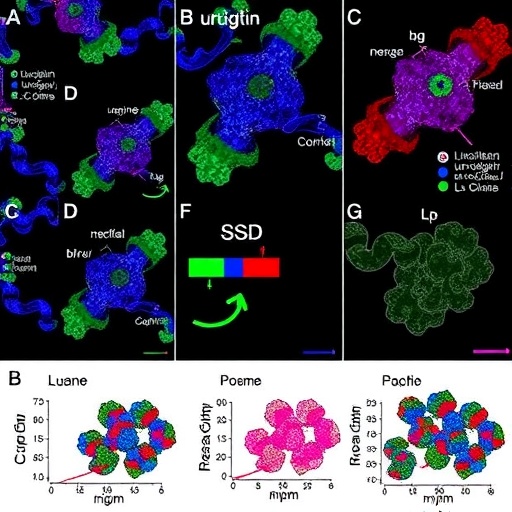
Credit: Sanford Burnham Prebys
LA JOLLA, CALIF. – June 27, 2019 – Desperate for nutrients, rapidly growing pancreatic tumors resort to scavenging “fuel” through an alternative supply route, called macropinocytosis. Scientists are hopeful that blocking this process, often described as “cellular drinking,” could lead to tumor-starving drugs. First, however, fundamental information is needed–such as the invisible molecular signals that drive the process.
Now, scientists from Sanford Burnham Prebys have identified a signaling pathway that regulates macropinocytosis, the nutritional cue that triggers the process and key metabolic differences between tumors–revealing new directions for drug development and patient treatment. The findings were published in Developmental Cell.
“To find the metabolic Achilles’ heel of pancreatic cancer, we need a deeper understanding of how these tumors obtain nutrients,” says Cosimo Commisso, Ph.D., senior author of the paper and assistant professor in Sanford Burnham Prebys’ NCI-designated Cancer Center. “Our study reveals that, like people, pancreatic cancer metabolism is diverse. Some pancreatic tumors can ‘dial up’ or ‘dial down’ macropinocytosis depending on the availability of glutamine–an amino acid that plays a key role in the metabolism of rapidly growing cells. Other tumors have naturally high levels of ‘always on’ macropinocytosis. We also identified the molecular regulators of this process, which may ultimately lead to personalized treatments.”
Pancreatic cancer is deadly. Less than 10 percent of people with the cancer remain alive five years later. More than 56,000 Americans are expected to receive a diagnosis in 2019, according to the American Cancer Society, a number that continues to rise. New studies have linked military service to an increased risk of pancreatic cancer, perhaps due to exposure to herbicides such as Agent Orange.
In the study, Commisso and his team analyzed cell lines derived from people with pancreatic ductal adenocarcinoma (PDAC)–the most common type of pancreatic cancer–and utilized a mouse model of human pancreatic cancer. In about half of the cell lines, removing glutamine caused macropinocytosis to “rev up.” The remaining cell lines maintained higher-than-normal levels of macropinocytosis regardless of glutamine presence or absence. In cells located inside tumors, where glutamine is scarce, macropinocytosis activity increased. Importantly, they demonstrated that two well-known cancer signaling pathways, EGFR and Pak, drove glutamine-sensitive macropinocytosis–providing new drug development insights.
“In addition to pancreatic cancer, macropinocytosis is prevalent in other cancer types, including lung, prostate, bladder and breast tumors,” says Commisso. “I’m hopeful that the insights we glean from our study of pancreatic cancer will apply to additional tumor types.”
Next, Commisso and his team will explore how hungry pancreatic tumor cells sense glutamine levels–similar to how a car measures gasoline levels through a fuel-level sensor. If this glutamine-sensing mechanism could be found and inhibited, a pancreatic tumor’s ability to turn on macropinocytosis would be blocked–and it would starve.
###
The first author of the study is Szu-Wei Lee, Ph.D., a postdoctoral fellow in the Commisso lab. Additional study authors include Yijuan Zhang, Ph.D.; Michael Jung; Nathalia Cruz; and Basheer Alas of Sanford Burnham Prebys.
The study’s DOI is 10.1016/j.devcel.2019.05.043.
Research reported in this press release was supported by the U.S. National Institutes of Health (NIH) (R01CA207189, P30CA030199). The content is solely the responsibility of the authors and does not necessarily represent the official views of the NIH.
About Sanford Burnham Prebys Medical Research Institute
Sanford Burnham Prebys is a preeminent, independent biomedical research institute dedicated to understanding human biology and disease and advancing scientific discoveries to profoundly impact human health. For more than 40 years, our research has produced breakthroughs in cancer, neuroscience, immunology and children’s diseases, and is anchored by our NCI-designated Cancer Center and advanced drug discovery capabilities. For more information, visit us at SBPdiscovery.org or on Facebook at facebook.com/SBPdiscovery and on Twitter @SBPdiscovery.
Media Contact
Susan Gammon, Ph.D.
[email protected]
Related Journal Article
http://dx.




